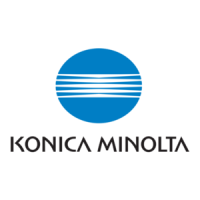






Do you have a question about the Konica Minolta bizhub 283 and is the answer not in the manual?
| Print Speed | 28 ppm |
|---|---|
| Duplex Printing | Yes |
| Hard Drive | 40 GB |
| Printing Technology | Laser |
| Maximum Paper Capacity | 3, 650 sheets |
| Scanner Resolution | 600 x 600 dpi |
| Copy Speed | 28 cpm |
| Copy Resolution | 600 x 600 dpi |
| Fax Function | Optional |
| Fax Transmission Speed | 33.6 kbps |
| Network Connectivity | Ethernet, USB |
| Paper Capacity | 1150 sheets |
| Max Paper Size | 11" x 17" |
| Zoom Range | 25% - 400% |
| Functions | Print, Copy, Scan |
| Operating System Compatibility | Windows, Mac |
| Scan Speed | Up to 70 opm |
| Type | All-in-One Printer |
Details about the machine meeting ENERGY STAR® guidelines for energy efficiency.
Lists registered trademarks, copyrights, and software license agreements for the machine.
Presents the terms and conditions for using the machine's software package.
Specifies the end-user license agreement for the i-Option LK-105 (Searchable PDFs) feature.
Provides crucial safety instructions, symbols, and warnings for machine operation.
Details compliance with EU directives, FCC rules, Canadian ICES, and laser safety standards.
Highlights locations of safety precaution labels on the machine and their importance.
Provides country-specific notices for Canada, USA, New Zealand, and Europe.
Details the recommended clearance around the machine for operation and maintenance.
Covers precautions for power source, operating environment, and storing copies.
Outlines types of originals that must not be copied to prevent illegal reproduction.
Explains the structure of the User's Guides provided in book and CD format.
Summarizes the core functions: Copy, Print, Fax, Scan, Network, Box, and Advanced.
Describes the touch panel and various keys for machine operation.
Explains the guidance feature for checking operating procedures and functional descriptions.
Covers procedures for turning the machine on and off using power switches.
Provides instructions for loading paper into standard trays, LCT, and bypass tray.
Step-by-step guides for clearing paper jams and staple jams in various locations.
Instructions for replacing toner bottles and staple cartridges, and emptying scrap boxes.
Details various optional accessories and kits for enhancing machine functionality.
Step-by-step guide for performing basic copying tasks on the machine.
Instructions for sending print jobs from a computer to the machine.
Covers the fundamental steps for sending faxes using the machine.
Explains how to send scanned documents via E-mail, FTP, SMB, and WebDAV.
Procedure for creating and configuring public, personal, and group user boxes.
Steps to save documents from Copy, Fax/Scan, or User Box modes into user boxes.
Instructions for printing and sending documents stored in user boxes.
Guides on printing from and saving to external memory devices like USB drives.
Procedures for saving and printing documents from Bluetooth-compatible phones/PDAs.
Covers configuring basic copy settings via the Quick Copy screen and parameter details.
Techniques for saving paper through double-sided and combined copying.
Using the Separate Scan feature for copying documents too large for the ADF.
Creating booklet-style copies using the Booklet and Booklet Original functions.
Utilizing the Frame Erase feature to remove unwanted areas from copies.
Automatically adjusting zoom ratios based on document and paper sizes.
Copying open book or pamphlet pages onto separate sheets.
Using different paper for cover pages during a copy job.
Finishing options for stapling documents or punching holes for filing.
Instructions for copying documents onto envelopes using the bypass tray.
Registering and recalling custom copy programs, shortcut keys, and quick settings.
Using Proof Copy and preview image checks to verify copy quality before final output.
Accessing the meter count to view total, large size, and color print statistics.
Utilizing power saving modes and weekly timer for energy conservation.
Configuring paper orientation, size, zoom, tray selection, and copy counts.
Features like Secure Print, Save in User Box, Proof Print, and User Authentication.
Techniques like combination printing and double-sided printing to save paper.
Setting binding margins, direction, and image shift for printouts.
Applying finishing touches like stapling, hole punching, center stapling, and folding.
Using cover modes and transparency interleaving for varied paper usage.
Incorporating watermarks, overlays, copy security, and metadata like date/time.
Optimizing print quality through adjustments and selecting original type.
Replacing TrueType fonts with printer fonts for potentially faster printing.
Customizing the printer driver interface using the 'My Tab' feature.
Adding and managing individual and group fax numbers in the address book.
Viewing and printing logs of fax transmissions and receptions.
Sending a single fax to multiple destinations using broadcast transmission.
Configuring sender name and fax ID for outgoing transmissions.
Adjusting scan settings like resolution, density, and file type for faxing.
Sending documents initiated by a recipient's request via polling.
Using relay distribution and timer transmission to minimize fax costs.
Sending faxes via email over the internet or directly via IP address on an intranet.
Sending scanned documents as email attachments over the internet.
Utilizing the Compulsory Memory RX User Box to manage received faxes.
Ensuring document confidentiality using F-Code transmission and user boxes.
Automatically forwarding received fax data to a specified destination.
Sending faxes directly from a computer using the fax driver.
Adding and managing email addresses, fax numbers, and groups for network scans.
Adjusting scan resolution and selecting original type for optimal scan quality.
Choosing output file formats and color settings for scanned documents.
Embedding page numbers, dates, and times into scanned documents.
Using background removal to improve scan clarity on colored or two-sided originals.
Applying frame erase to remove unwanted areas like shadows from scanned documents.
Selecting multiple destinations from the address book or groups for network scans.
Sending scanned documents as email attachments.
Reviewing current jobs and job history for network scan transmissions.
Editing the names of documents stored in user boxes for better organization.
Selecting the 2-Sided option in scan settings to capture both sides of a document.
Configuring automatic deletion of data from user boxes after a specified time.
Printing or sending multiple documents together as a single combined job.
Modifying finishing options like sorting, stapling, and folding before printing saved data.
Managing user boxes and settings remotely using PageScope Web Connection.
Describes i-Options for web browsing, PDF processing, and PageScope My Panel integration.
Procedure for purchasing, generating request codes, and installing i-Option licenses.
Steps to resolve issues if the machine does not power on.
Troubleshooting a blank or unresponsive touch panel screen.
Addressing messages related to empty consumables or cleaning requirements.
Resolving paper jams and understanding error messages with trouble codes.
Navigating to the User Settings menu to configure machine parameters.
Details on System, Custom Display, Copier, Scan/Fax, and Printer settings.
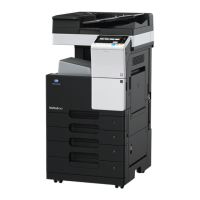



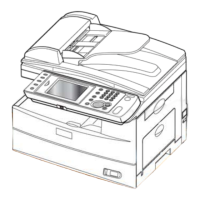
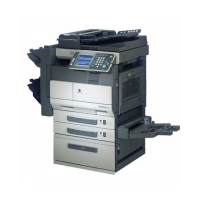
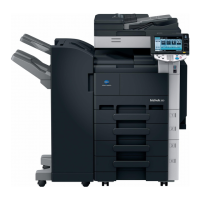
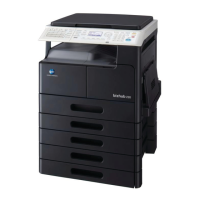
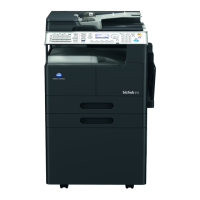
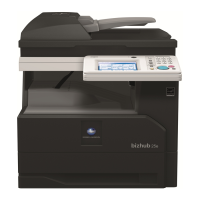
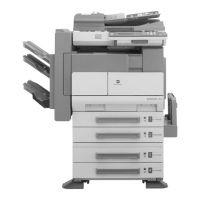

